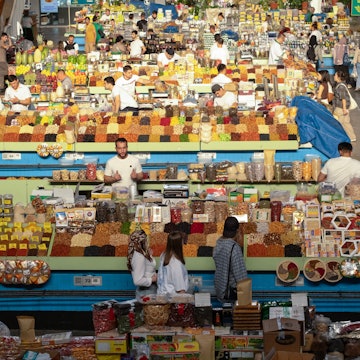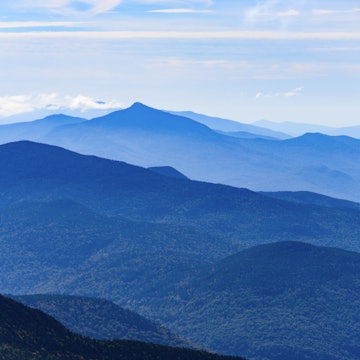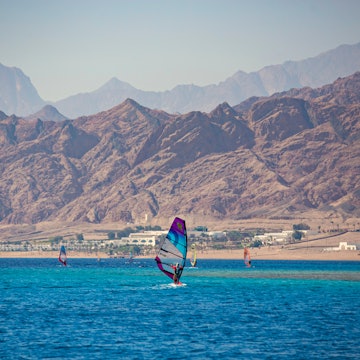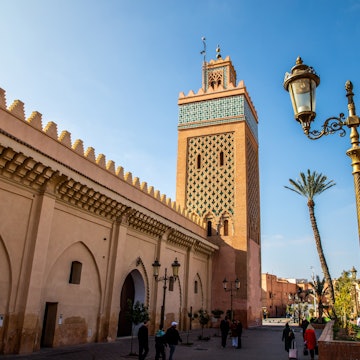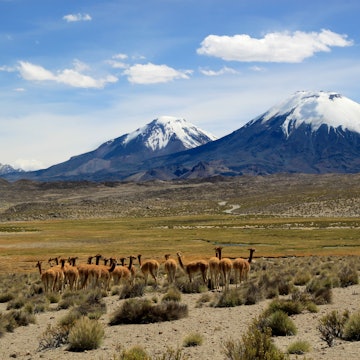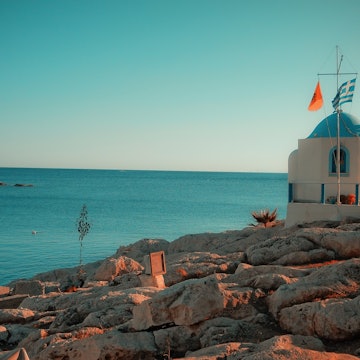
Get cultured in Bridgetown: 8 ways to explore Barbados' historic capital
Jun 26, 2018 • 9 min read

Five shipwrecks at shallow depth make snorkeling an absolute treat at Carlisle Bay Lebawit Lily Girma / Lonely Planet
It’s easy to see why Bridgetown is a popular cruise stop. The Careenage is an Instagram-worthy scene of bridges and a boardwalk running along a river dotted with sailboats and catamarans, while waterfront cafes offer sweeping views over the city’s Parliament Square. Across the water, bustling colonial-era streets are lined with pastel-colored duty-free malls and warehouses turned discount stores, and alleys lure pedestrians towards fruit carts or souvenir trinkets.
But beyond this contemporary surface, downtown Bridgetown remains the heart of Barbados’ history. It was Britain’s most lucrative port for nearly three centuries through sugar cane plantation and slavery, and thus its most prized and protected possession. The city's original streetscape, designed in 1657, has barely changed since then – and that’s what earned Bridgetown an inscription on the UNESCO World Heritage List in 2012. Original street names remain, too, like Liverpool, Lancaster, and Swan – despite a string of at least 10 fires between 1668 and 1993 which destroyed a good part of the city’s early history and official records.
Fascinating stories unfold as you walk – if you know where to look. Here’s how to get cultured in downtown Bridgetown.

Explore the Careenage’s past
It’s hard to imagine, but the city’s popular waterfront area, also known as Constitution River, was once a chaotic scene where mercantile ships unloaded and loaded goods between long-haul journeys. Boats were 'careened' to be cleaned and women lined the docks with baskets of foods for sale. The Careenage was England’s first port of call on the Transatlantic Slave Trade crossing and became its most important and valuable harbor, bigger than Amsterdam and Boston.
As you stroll the boardwalk, pause at the commemorative plaque honoring the 'strength and resilience' of those enslaved Africans transported across the Atlantic – on a direct path from West Africa to Barbados – and who 'at or near this site,' were sold as slaves. They were taken across the street from the Careenage to be auctioned off to plantation owners. The plaque also honors those who fought to abolish slavery on the island.
Continuing east leads to the Chamberlain Bridge — originally a wooden bridge when the British found it in the 1600s as they settled in Bridgetown (a clear sign that the Amerindians were there first). It was rebuilt in 1872 as a swing bridge to allow the passage of ships and modernized in 2006. Stop along the railing and take in the panoramic views of Parliament Square before continuing a few steps west to Independence Park.
Taking a break in this verdant waterfront square is a favorite local pastime. The park also features a nine-foot tall statue of Barbados’ Father of Independence, Errol Walton Barrow.
On the other side of the Chamberlain Bridge, you’ll find the controversial bronze statue of Admiral Nelson at Heroes’ Square – erected in 1813, it precedes the one built in London by at least two decades. Heroes’ Square, however, was once the site of 'the Cage,' a wood and wire prison with whipping post, where plantation owners inflicted brutal punishments on runaway slaves and locked them up in public view. Many Barbadians see this small plaza as a shrine commemorating the suffering of their ancestors. It’s quite the controversy, then, that Lord Nelson’s figure – a man who hated Barbados and was vehemently opposed to abolition of slavery – remains standing on such a sacred location.
For a guided, vibrant historical tour of Bridgetown’s Careenage and surrounding streets, arrange for a two-hour walk with renowned Barbadian author and expert Morris Greenidge. Sights will come to life through his storytelling, making you feel as if you’ve plunged back three centuries.
When you’re ready to rest up, the historic Waterfront Café, overlooking the Careenage, serves up cou-cou and flying fish with a refreshing Bajan lemonade.

‘Lime’ on Carlisle Bay
A five-minute walk from the downtown Careenage area, lining the southern edge of the city and running over a mile, Carlisle Bay is Barbados’ most stunning body of water, lined with pristine white sand and an iridescent Caribbean sea.
Ironically, it was also the first body of water that slave ships crossed when arriving from the Atlantic, starting around 1645. Today, it’s a protected marine park – you can go scuba diving to explore up to five shipwrecks here at shallow depths, from former military boats to sunken drug running vessels. Snorkeling right off the beach will also lead to turtle spotting (there are marked buoys for safety).
A favorite of locals and visitors from nearby hotels, crowds come here to relax in the shade of colorful umbrellas, play soccer, lunch on fish cutter sandwiches from Cuz’s Fish shack or build sandcastles with their little ones.
See the birthplace of rum on Roebuck Street
Stand on the corner of Roebuck and Palmetto streets, a triangular spot directly opposite the Police Station, and you can brag that you’ve seen where rum was first discovered.
A vendor stands there daily with her fast food cart, as crowds shuffle back and forth under the hot sun. But this is where, in the 17th century, Captain Rumball owned a tavern. The legend goes that while searching for an empty shipping barrel – all goods came and left Barbados in wooden barrels – he stumbled on one that reeked of alcohol. After tasting its content, he asked his friends to try it and realized he’d stumbled on a concoction worth selling (the barrel had been filled with sugar cane that fermented over time). And thus, the first of the Caribbean’s signature beverage was served and sold at Captain Rumball’s tavern on Bridgetown’s Roebuck Street. The drink was so powerful and popular that an edict came in 1645 from the King of England, stating that the Royal Navy must have a tot (or half pint) of Barbados’ rum on a daily basis. The drink was eventually renamed after its finder, but shortened to 'Rum'.
Over time, Roebuck Street became home to the highest concentration of rum bottlers and blenders in the world, with nearly each building housing a rum merchant. Walk past that famous corner, south of Palmetto Street, until you hit its edge and end up facing Old City Bar, a ramshackle, signature red-painted rum shop, for a swig of rum with a view of Parliament Square.

Go on a Bajan walking food tour
History buffs and food lovers alike will thoroughly enjoy the three-hour, leisurely 'Original Bajan Walking Food Tour' around downtown Bridgetown with Lickrish Food Tours.
Tour leader and historian Claudette Levi-Farnum shares her island’s trajectory along key sights, in part illustrated through black and white photographs, while you pop into various locales for a taste of eight classic Bajan dishes. Barbecued pigtails, fish cakes, Bajan chicken soup, flying fish and cou-cou are a few of the highlights dished out of café counters, food trucks and second-story cafeteria-style restaurants hidden from plain sight. Ryanne’s in particular, is a standout for its wrap-around balcony seating with views over lively Broad Street, while Mustors is as historic as the city itself, dating back several generations.
Shop on Broad and Swan Streets
Strolling Bridgetown’s busiest shopping streets feels like taking a step back in centuries, despite the familiar sounds of roadside vendors clamoring and haggling.
Broad Street, the city’s main shopping thoroughfare, is where British merchants used to trade. It’s lined with duty-free stores, local restaurants and mini-malls. Off Broad, Jewish immigrants ran their commerce on the pedestrian-only Swan Street (formerly known as Jew Street, reflecting the importance of the Jewish-owned businesses in the area at the time). Their shops were on the ground floor and their homes above. Today you’ll find Swan Street swarming with shoppers, breadfruit or coconut water carts and clothing or shoe stores, among others.
On a side alley off Swan, hidden from plain view, is Busby Alley – clogged with stands displaying cheap sunglasses, fabrics and other souvenir trinkets. This block is where freed Africans used to sell value goods such as breads, cakes, or puddings (they weren’t allowed to sell ground provisions because they had to be tied to a plantation to get a license to sell, even after emancipation).

Tour the oldest synagogue and mikveh in the Americas
When Sephardic Jews escaped Dutch Brazil and the Portuguese Inquisition in the 17th century, they took refuge in the Caribbean region. Those who picked secluded Barbados built the Nidhe Israel Synagogue in 1654, the oldest in the Americas, with an adjacent cemetery. Part of Bridgetown’s UNESCO designation – the area is known as the Synagogue Historic District – the original synagogue suffered earthquake damage in 1831 and was rebuilt in 1833. Despite their small group size, Barbados' Jewish population are credited for advancing the island’s sugar production technology faster than the rest of the region and introducing new methods such as wind power, manuring and using bagasse as fuel for the sugar factories.
The highlight in this historic compound, aside from the synagogue, is an adjacent 16th century, full-size mikveh – also the first built and used in the Americas. The mikveh is a natural, sacred pool in which married Jewish women immerse their bodies seven days after their menstrual cycle ends, in order to restore 'purity' and begin conceiving again. The women would repeat this process until they were pregnant. Here at Nidhe Israel’s, fresh groundwater flows in and out of the four corners of the coral stone walled chamber, naturally filtering out any prior bath water.
After touring the mikveh, head towards the modern, single-story museum building at the back. It’s filled with images, maps and short video presentations on the history of Barbados’ Jewish immigrants. Look down at your feet, too, as glass floor enclosures display native artifacts from the island’s first inhabitants.

Visit St Mary’s Church
Built in the 19th century and one of the oldest in the city, St. Mary's Church is the resting place of Bajan National Hero Samuel Jackman Prescod. Prescod was the first non-white to be elected to the House of the Assembly and enter Parliament in 1843. He’s credited with obtaining the right to vote for Barbados’ free blacks. You can see his portrait etched on the B$10 bill. Across St. Mary’s Church, locals relax on shaded benches in Jubilee Gardens, once the first hotel district in Bridgetown.
Pay tribute to Barbados’ only National Heroine
Sarah Ann Gill is the first and only female among Barbados’ national heroes – a title earned for being one of the earliest defenders of the right to freedom of religion during the days of slavery. The daughter of black and white parents in 1795, Gill was a practicing Methodist in the 19th century, a religion that was becoming widely disliked by the British for challenging the island’s slave society. In 1823, a white mob destroyed the Methodist chapel in the capital, but Gill was not deterred. She began holding church meetings in her home and persisted despite receiving death threats.
Despite prosecution for her unlawful assemblies, Gill continued to uphold her right to religious freedom. After much suffering, Gill eventually secured a clear declaration from the Crown of the right to religious tolerance across all of England’s possessions. A Methodist Chapel was built on land she purchased and donated to the church. You can view it today at St. James Street Methodist Church. While there, head towards the cemetery at the back of the church to pay your respects to this feisty Bajan heroine.
https://shop.lonelyplanet.com/categories/barbados?utf8=%E2%9C%93&category=barbados







